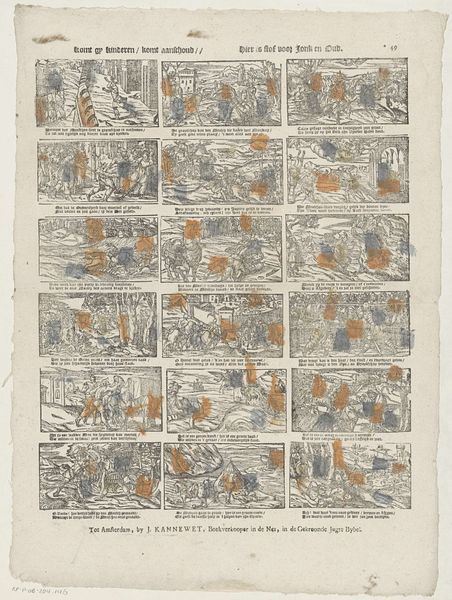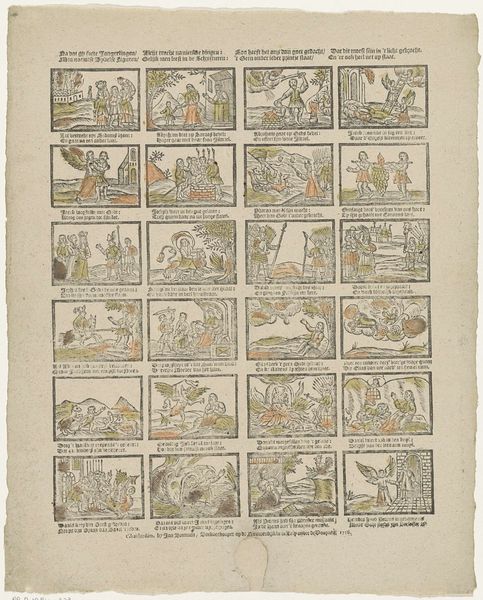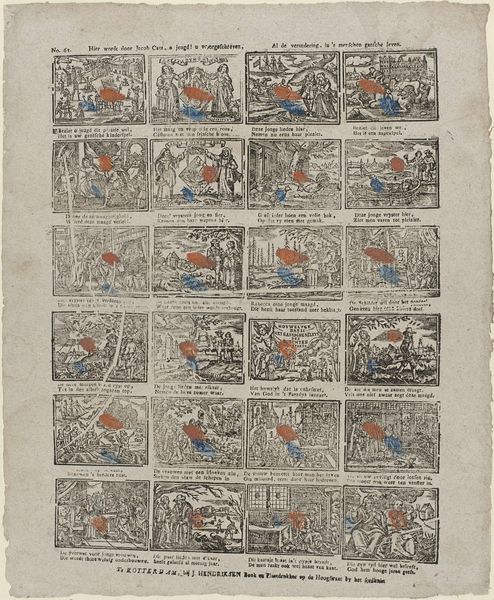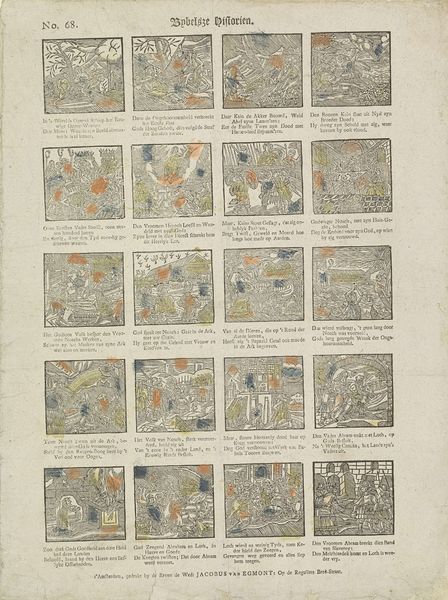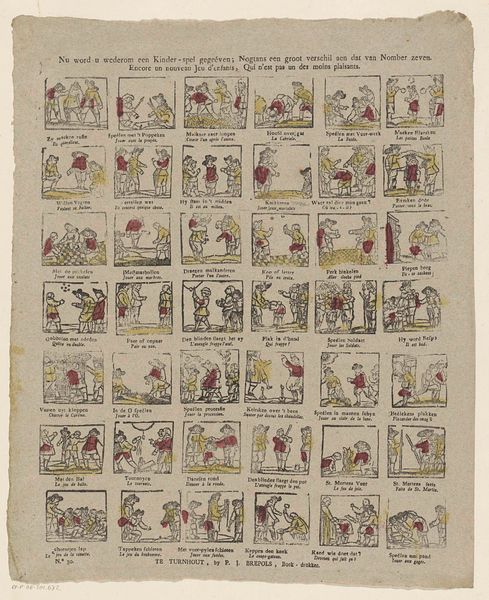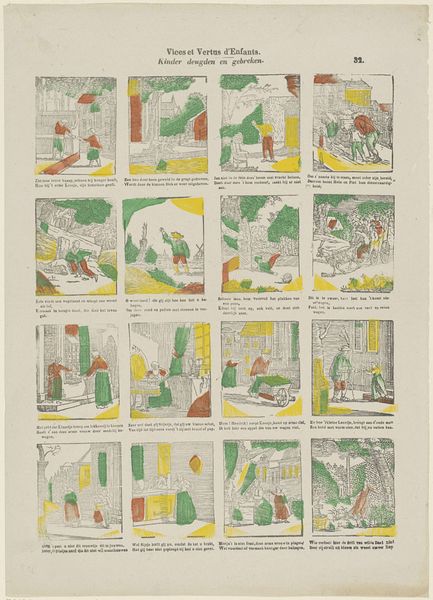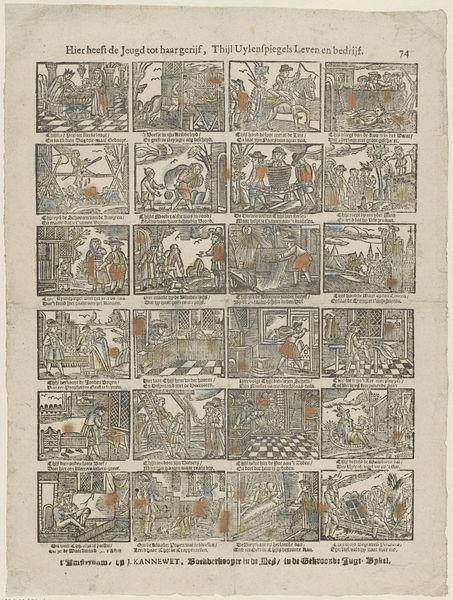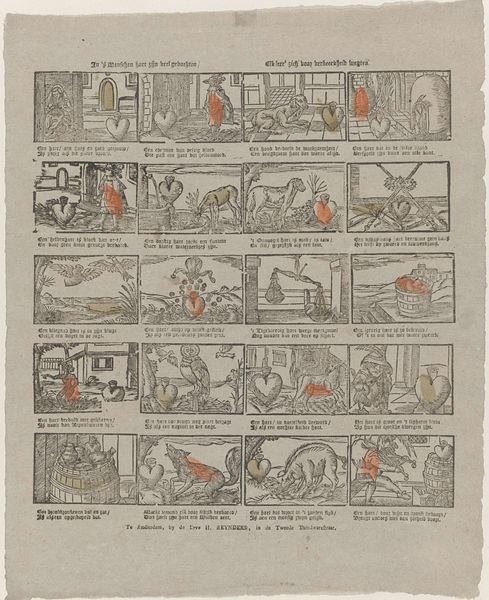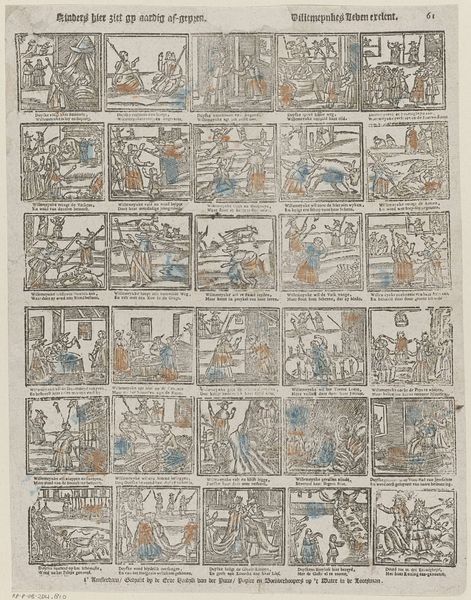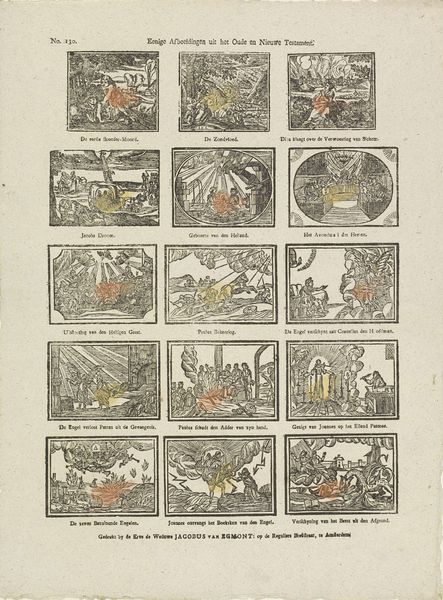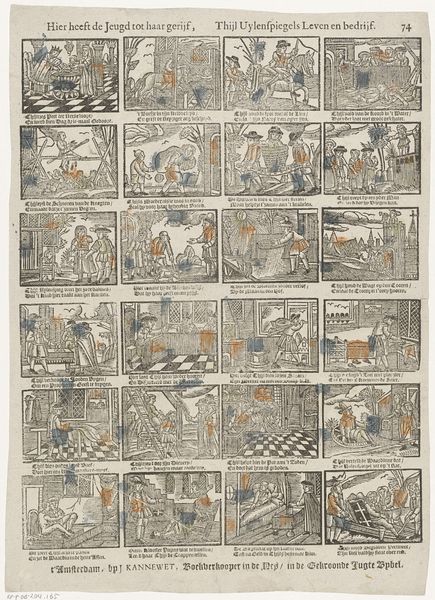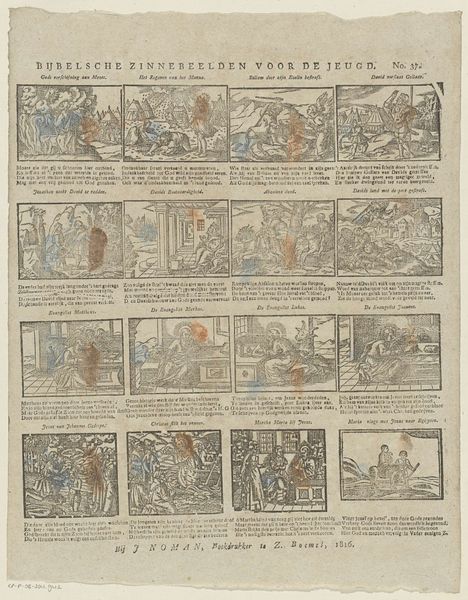
Hier wordt door Jacob Cats, o jeugd! u voorschreven, Al de verandering in 's menschen gantsche leven 1810
0:00
0:00
graphic-art, print, etching, woodcut, engraving
#
graphic-art
#
narrative-art
# print
#
etching
#
figuration
#
linocut print
#
woodcut
#
history-painting
#
northern-renaissance
#
engraving
Dimensions: height 405 mm, width 280 mm
Copyright: Rijks Museum: Open Domain
Curator: This print, made by Jan Hendriksen in 1810, is titled "Hier wordt door Jacob Cats, o jeugd! u voorschreven, Al de verandering in 's menschen gantsche leven"—which roughly translates to “Here Jacob Cats prescribes to you, o youth! All the changes in human life.” It employs techniques such as etching, engraving, and woodcut. Editor: Woah, it's like a visual board game! Except instead of spaces, there are these tiny, almost primitive, scenes. Each a little vignette, a stage of life maybe? I get a slightly anxious vibe, all those mini-narratives playing out at once. Curator: Well, Jacob Cats was a popular Dutch poet and moralist. This print essentially visualizes his teachings about the different stages and moral lessons throughout life. It functioned as a didactic tool, meant to instruct the youth through accessible imagery. Consider the period; visual literacy was more prevalent among the populace than written literacy. Editor: Aha! That explains the narrative feel. So, it's like a comic strip with morals. Look at how small and busy the figures are, they become these adorable symbols of human striving, failing, and, hopefully, learning. Is that naive quality on purpose? Or the best the engraver could do at the time? Curator: A bit of both, I suspect. The 'naivety' aligns with a certain tradition of Northern Renaissance printmaking and certainly facilitated broader communication. These aren’t designed to be photorealistic portraits, they’re meant to be legible, easily understood, and reproducible on a large scale. The themes were what truly mattered. Editor: It's like the world boiled down to these essential, blocky forms. A village miniaturized for philosophical rumination, as quirky as it is wise! Looking at it makes you wonder, "Have humans changed much since then?" Curator: Perhaps less than we imagine. Hendriksen’s work highlights the enduring nature of these lessons and societal roles, capturing a specific historical moment, and a continuing theme. Editor: I’ll take that as reassuring. Now I'm left thinking about the lives of all the other "youths" staring at this very same image, centuries apart from each other, wondering what all this "living" is really about.
Comments
No comments
Be the first to comment and join the conversation on the ultimate creative platform.
